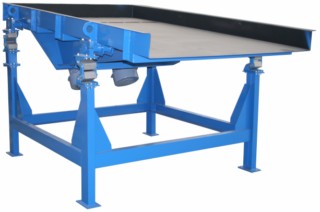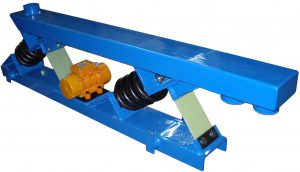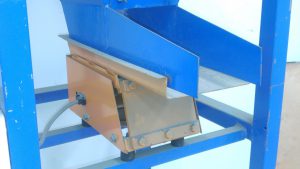There are four broad categories of drive systems for vibrating equipment. These include:
Direct Drive

Direct drive describes vibrating equipment that is excited directly through the use of rotating out of balance weights.
Motors that drive the weights can be either integral to the motor in lighter duty applications or external as in the case of large mining screens.
These are the simplest types of vibrating screens and vibrating feeders available. Hence the most popular.
| Pros | Cons |
|---|---|
|
|
Twin Mass

Twin mass drive systems are tuned to operate at just below the natural frequency of spring systems to convey vibrating forces to material.
Excitation is provided by standard out of balance motors.
These systems are more complex but energy efficient which results the ability to make much larger equipment using standard parts.
| Pros | Cons |
|---|---|
|
|
Natural Frequency
Similar to Twin Mass drive systems, Natural Frequency machines use resonance but operate much closer to it.
A crank arm is used which will control each vibration cycle reliably. As a result, constant feed rates can be expected from this equipment.
Machines up to 20m in length can be built with this system.
| Pros | Cons |
|---|---|
|
|
Electromagnetic

Electromagnetic vibrating machinery uses a high frequency coil to provide the vibration.
Used in lighter weight applications and can provide a high degree of fine feed rate control.
They operate at low strokes and very high rpm. Therefore, they are used in lighter weight applications and can provide a high degree of fine feed rate control.
| Pros | Cons |
|---|---|
|
|
